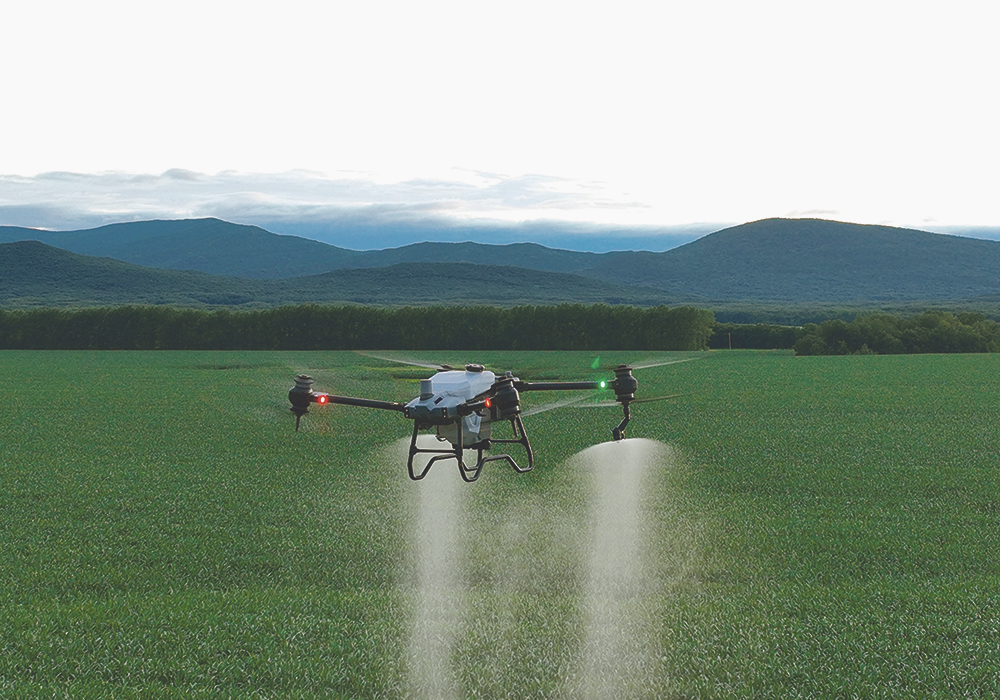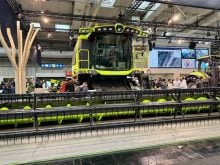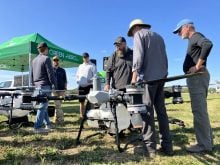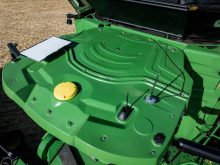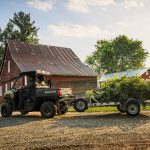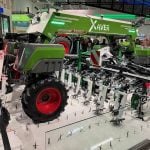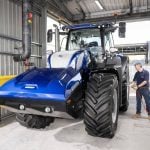Glacier FarmMedia – Spray drone technology is rapidly evolving, but regulations that allow drones to apply crop protection products are struggling to get off the ground.
The Remotely Piloted Aerial Application System (RPAAS) working group was formed to help connect individuals and organizations that are generating the data required to make drone applications legal in Canada.
Why it matters: Farmers are buying drones for spraying even though regulations for their use have not been finalized.
Read Also
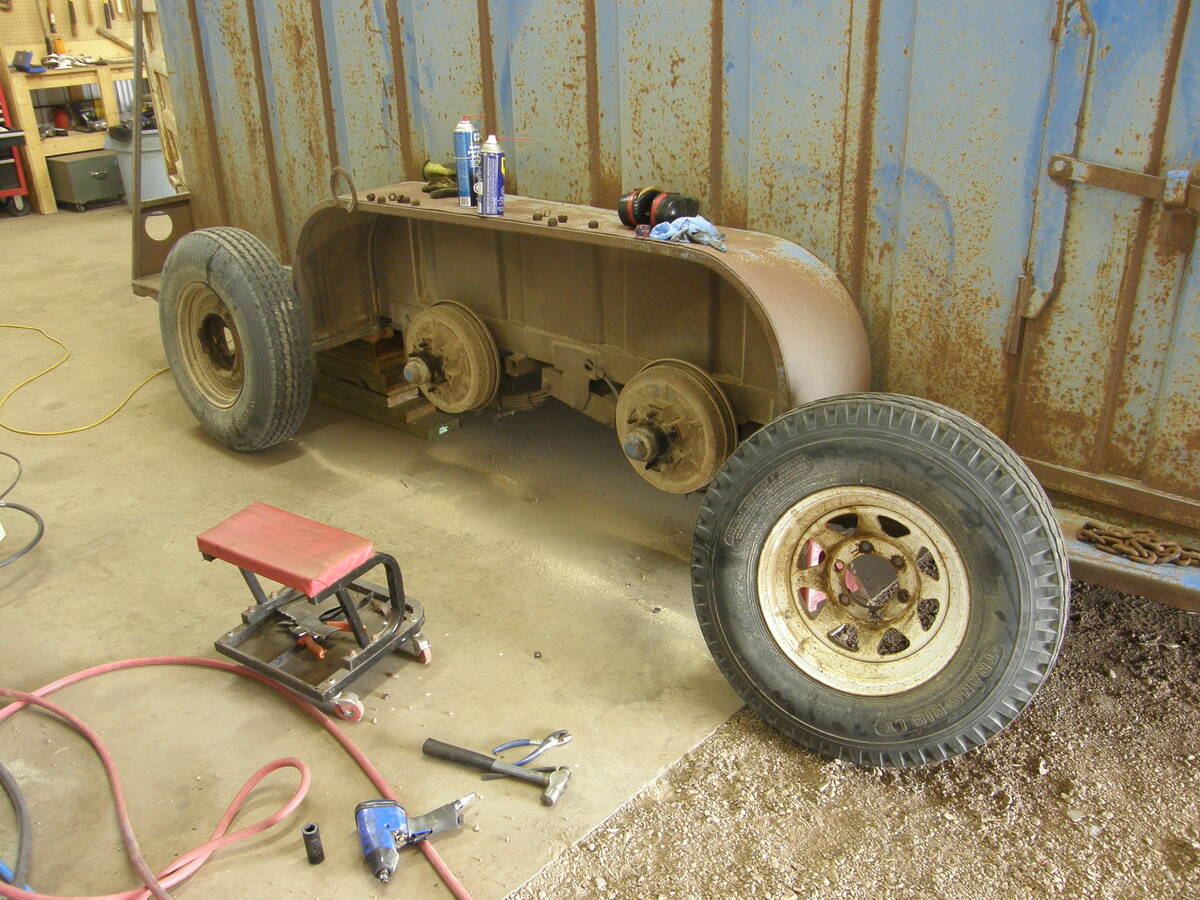
How to overhaul electric trailer brakes
Let’s look at what you’ll find when you pull the wheel hubs off your livestock trailer, and what you need to consider to keep those electrical brakes in good working condition.
RPAAS held its 2022 workshop in Kelowna, B.C., in early October, where Ross Breckels from the Pest Management Regulatory Agency (PMRA) discussed the work required.
“The use of pesticides pulls under the Pest Control Products Act and is administered by PMRA. Under the act, until drones can prove they can apply safely and effectively, and until they’re on product labels, they can’t be used in Canada,” Breckels said.
“I’m very excited to tell you today that as of three weeks ago, there are two products registered with RPAS (remotely piloted aircraft system) on the label.
“These are two microbial products, so VectoLex CG and VectoBac 200G biological larvicide. They’re both restricted use, they’re both granular products and they’re both low risk active ingredients. So, the risk assessment is fairly straightforward to these products.”
[RELATED] Drones and helicopters make a fitting pair
Crop protection products typically have higher risks and will require more information to prove they are safe.
Breckels said the PMRA registers products, not application techniques, and the approval of a product is based on whether the risks to humans and the environment have been proven acceptable.
Registrants who want drone application on their labels should provide a pre-submission to the agency, he added.
“That’s where we can discuss the intended uses of a drone and we can tell you the data requirements. The next step would be a research authorization where you can study any data that you need, and get the data in support of submissions.”
He said the submission would come to the PMRA as a category B, for drone use on an existing end-use product and for a new end-use product based on an existing registered active ingredient.
The submission can also come as a category A, for a major new use for an existing registered active ingredient, or a new active ingredient input type that is not yet registered.
Beyond the science assessments needed to prove safety for the environment and human health, the PMRA must also do a value assessment to determine the efficacy and benefits of a product when applied by a drone.
For this, Breckels said the PMRA can bridge data from aerial applications if spray volumes differ from ground applications for specific products.
“We need to know about operating conditions. So that’s the right height, speed, drone platforms, etc. We need to know about spray volume and droplet size, and this is the big one for us, we need to know about spray deposition and drift data.”
[RELATED] Precision field logistics
On the human health front, the PMRA requires information about exposure to people who mix the loads for the drones, as well as for the pilot and bystanders.
Maximum residue limits for ground application also cover aerial applications, so they will likely work for drones as well.
However, if the data is incomplete, data from a full set of field trials may be required, Breckels said.
There will likely be a standard statement for drone applications on product labels, just as there is for aerial and ground applications.
“Such as, do not apply during periods of dead calm. Avoid application of this product when winds are gusty. However, with certain research authorizations, we have restricted the wind speed to eight kilometres per hour rather than the default 16 in Canada. That’s just until we get a better picture of a drift profile produced, but we are starting to generate a better picture of this,” Breckels said.
The CFIA may also specify on labels the specific type of drone style that can be used and if they can have booms. That agency is involved in an Organization for Economic Co-operation and Development (OECD) subgroup formed in 2019, which examined the state of knowledge and research available on drone spraying.
Breckels said the OECD subgroup published a report in 2021 that highlighted recommendations for drones, which were condensed into five work groups.
The first group’s goal is to develop an empirical spray drift curve to estimate off-site exposure, and to develop mechanistic drift models.
The second group is establishing a platform database and surveying manufacturers about future trends to reduce the burden of testing for regulators. For instance, instead of testing every single drone platform, the group hopes to use benchmark platforms.
The third group is developing best practice material, promoting recommendations for research, and doing drift trials.
The fourth group is developing standard methodologies to support regulatory decision-making and building on information from the other groups.
The fifth group encourages development of improved spray systems such as pump systems and transfer loading systems, and will work to develop an ISO standard.
Breckels said Agriculture and Agri-Food Canada is also conducting residue trials that examine how drones compare to conventional ground sprayers.
“It involves a minimum of three drone platforms. We have different payloads and different model placements,” Breckels said.
“It will be using an insecticide and/or fungicide, which will remain undisclosed for obvious reasons, and then four crop types. So, a small and a large field crop, a trellis crop and an orchard crop. This work is realistically anticipated to be completed in 2025.”
He said the CFIA is also involved with the RPAAS working group and with grower associations, the Canadian Aerial Applicators Association and several custom applicators.
“We are slowly beginning to put the drone puzzle together, bit by bit. But we’re at the point now where we need to collate and validate the data, especially with respect to drift studies, before we can use them wholesale in risk assessments,” Breckels said.
Markus Weber, president of LandView Drones, said a big driver for use of spray drones in Canada is the hardware cost.
“I’m speaking now for farmers, my customers. They are buying drones this winter and they plan on applying. Some of those will be over 25 kilograms. There may not be a permit in place, I mean an SFOC (Special Flight Operations Certificate), and similar things will happen with pesticide application,” Weber said.
“What happens with those farmers that are buying these in the meantime? Because that really is a driver. It’s not about applying better. It’s not about any other benefits of drones. It really is a hardware costing where I see a lot of farmers buying the drone because it’s cheaper and that will put a lot of pressure on you.”
Weber asked if there is a faster way to get every label amended to include drone applications.
Breckels said there is a case for this with low-risk active ingredients.
“If there’s no risk from runoff, there’s no risk from spray drift that’s in an initial assessment. If they’re low risk, then they can in theory, from an environmental perspective, go on the label right now,” Breckels said.
“However, most agricultural pesticides have spray buffer zones or there’s some sort of risk involved. And until we can address those risks, we can’t allow them, because it says under PCPA that you have to prove that they can be applied safely.”
In an interview, Weber said he’s curious how actively the PMRA will prosecute farmers that spray their own crops with a drone sprayer.
“I have customers putting their money on them (PMRA) not enforcing it. This will be an interesting year,” Weber said.
He said the largest spray drone DJI makes, the T40, costs $42,600 for the package that comes with a 40-litre spray tank and a 50-litre granular tank.
“It’s now economical for small farms to replace their ground sprayers with drones, because they can do the same job and the cost is much less than a sprayer,” Weber said.
“You can spray about 30 acres in an hour with that system at two gallons an acre. I know one farmer who sprayed with a T30 last year and he did thousands of acres with just one drone.”
Weber said one DJI T40 drone can handle all the spraying needs for a 2,000-acre farm, and if the farm can field two pilots, it can get a second drone and cover a 4,000 acre farm.
– This article was originally published at The Western Producer.



